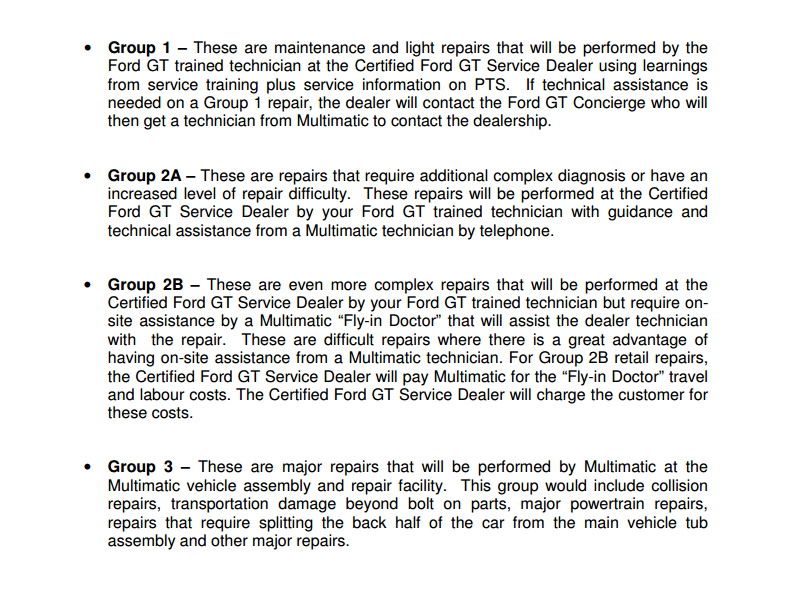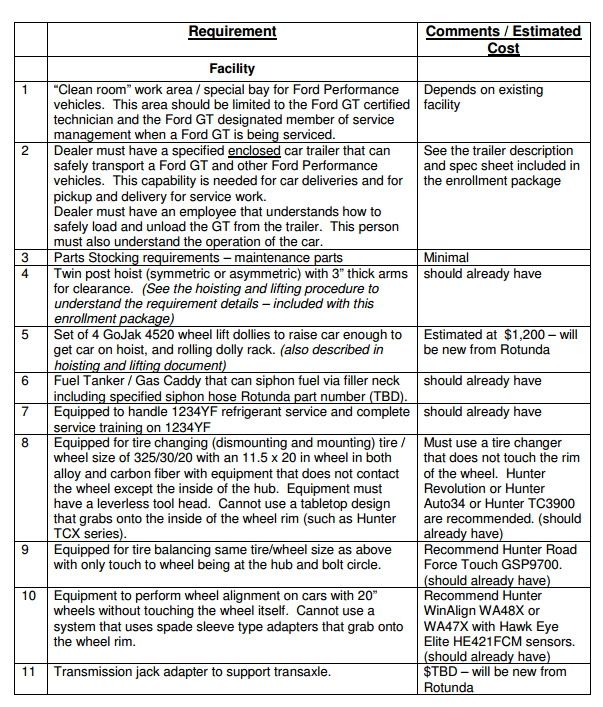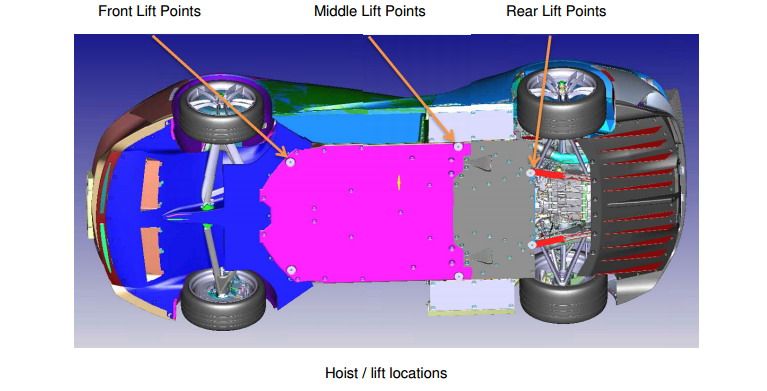Ford is set to introduce the GT supercar for the 2017 model year and revive the iconic nameplate after an 11-year hiatus. Launched just in time for the 50th anniversary of the original GT40's win at the 24 Hours of Le Mans, the new GT is more than just a spectacular revival. The supercar will debut many industry-first technologies for road cars, including a Gorilla Glass hybrid windshield and carbon-fiber and resin compound wheels that provide greater design flexibility.
What's more, the GT will become Ford's first car to benefit from bespoke pick-up/delivery service and maintenance/repair process that will require significant investment by each dealer.
With only 250 vehicles to be built for the 2017 and 2018 model year, the GT will be a rare bird. As a result of this and the fact that every vehicle will need special attention during maintenance and repairs, authorized GT service centers will be even rarer. Besides the fact that not all dealers will sell the Ford GT, the ones that will, are required to service the car and thus follow strict protocol to go along with acquiring specific gear to transport and fix the supercar.
Also, because the Ford GT's hand-built assembly process is outsourced to Multimatic, the service process will be unlike anything Ford dealers have dealt with in the part. The folks over at All Ford Mustangs have recently acquired an internal dealer document detailing the entire process and requirements necessary to become an authorized GT service center and it appears that the new supercar is set to receive the exclusive care only the likes of Ferrari and McLaren give to their vehicles.
Continue reading for the full story.
Service and Repair Groups
The certified Ford GT service dealers that will be able to purchase repair parts or submit warranty claims will have three levels of repair requirements to consider.
There's Group 1, which includes maintenance and light repairs that will be performed by a trained tehnician at the dealer center. Next up is Group 2A for repairs that require more complex diagnosis or have an increased level of repair difficulty. These repairs will also be performed at the service dealer, but with guidance from a Multimatic technician by telephone.
For even more complex repairs there's Group 2B, which requires assistance from a Multimatic "Fly-in Doctor." For these repairs, the dealer will pay Multimatic for the "Fly-in Doctor" travel and labour costs and then charge the customer when the car is finished and delivered.
Finally, there's Group 3 for collision repairs, major damage and powertrain repairs, and issues that require the removal of the rear half of the car from the main tub. These repairs will be performed by Multimatic at its vehicle assembly facility.
Handling the Car
Handling, moving, and driving the car from the customer to the dealer and back is as important as repairing it and Ford has designed a strict plan for such cases.
For instance, pickup and delivery will be made with a specified encosed trailer only. Each car must be kept inside the dealer building during repair, including overnight or when awaiting transport for Group 3 repairs. Also, dealers are required to use a car cover on any GT that is in for service anytime it is not being worked on. Removed body panels must also be wrapped for protection while off the car.
Moving and driving the GT is a task for trained Ford GT technicians only. Finally, Ford wants GT dealers to photograph the car when picked up and at the time the service is complete, in order to provide a record of whether the damage was already on the car prior to being picked up for repairs.
Shop Requirements
Ford GT dealers will also receive a long list of requirements for service and maintenance.
Each facility will require a clean work area or special bay which will be limited to the Ford GT and the technicians qualified to work on the car. Dealers also must have the specified enclosed trailer for transportation and an employee that understands how to safely load and unload the GT from the trailer.
All dealers must have a stock of maintenance parts, a fuel tanker than can siphon fuel via the filler neck, a twin-point hoist with three-inch thick arms, a set of four GoJak 4520 wheel lift dollies, and proper equipment to handle 1234YF refrigerant service.
They also must be equipped for tire changing for both alloy and carbon-fiber wheels with equipment that does not contact the rim except the inside of the hub. Similar tire balancing and wheel alignment is also mandatory, as is a transmission jack adapter to support the transmission.
Hoisting Procedures
Because the Ford GT is built around a carbon-fiber tub, lifting it for repairs requires special equipment and proper training. Before lifting the car on hoist arms attached to the aluminum lift points on the chassis, the GoJak 4520 wheel lift dollies must be used to raise the care as much as possible for enough clearance under the vehicle. Ford also warns dealers that the GT's mid-engine layout requires specific care to ensure that the vehicle is safely balanced on the hoist, as the center of gravity is located approximately below the fuel filler door.
Transport Trailer Requirements
Ford GT pickup and delivery from the client must be made using a specific trailer than can accommodate the little ground clearance, width, and upward opening doors for the supercar. Ford recommends the JIMGLO Elite, a 22-foot long and seven-foot wide trailer with a 48-inch ramp extension, hydraulic jack, and electric winch, among other features.
Approximate Cost
The enclosed trailer for transporting is the most expensive piece of equipment dealers must add, being priced at around $30,000. The set of four GoJak 4520 wheel lift dollies with rolling dolly rack adds another $1,500 to the tab, while the transmission jack adapter will set dealers back another $700. Finally, technicial training will require another investment, but Ford has yet to announce figures for that. In all, dealers will have to pay at least $32,200 to be able to service and maintain, and thus be able to sell, the Ford GT.
Why it matters
All the requirements listed above would sound spectacular for a regular vehicle, but they're actually pretty common for such an exclusive supercar. The likes of Ferrari and McLaren have been working the same way for decades, but this is indeed exceptional for company that usually sells regular cars that don't need special equipment or training at dealer centers. While taking all these measures will prove costly for dealers, they will definitely help dealerships provide top-notch maintenance and repairs for the company's most exquisite and exclusive supercar to date. This long list of requirements also proves that Ford is willing to do whatever it takes to provide the ultimate supercar experience to its customers and join the ranks of exclusive sports car makers such as Ferrari, McLaren, and Lamborghini.
2017 Ford GT
Read our full review on the 2017 Ford GT here.




